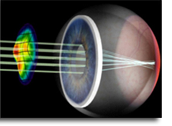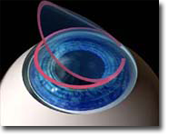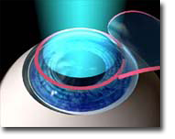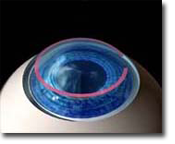
Your eyes, just like your fingerprints, are unique. The specific irregularities causing your vision to be less than optimal must be precisely identified in order to produce excellent vision. Dr. Michael McMann uses the Zywave® II Wavefront Aberrometer digital mapping system to capture each eye's unique imperfections with greater accuracy than ever before. This advanced technology creates a detailed 3D map of the cornea's surface which Dr. McMann then programs into a digital treatment plan which is used to perform your LASIK procedure.

Before the laser is applied to the cornea, a corneal flap must be created. Dr. McMann uses the XP Microkeratome for this step. Some LASIK practices say that using a laser during this step is a better option. Dr. McMann feels otherwise as with the microkeratome he can make a clean separation of the tissue, which results in shorter healing times when it is replaced. A laser creates a series of small bubbles beneath the surface of your eye. Then the surgeon must peal back the flap in a manner much like separating Velcro, which can result in longer healing times.

Once the flap is gently folded back, the excimer laser is used to reshape the cornea into a round shape. The laser that Dr. McMann uses is the WaveLight® EX500 Excimer Laser system. With the precision of this advanced laser, most patients need a very miniscule section of tissue removed - about the thickness of a human hair - to make the correction. This entire process takes just minutes per eye. During the procedure, patients may feel slight pressure on their eyes, however rubbing your eyes, putting in contacts, or removing contacts will commonly cause more pressure than LASIK.

After the cornea has been reshaped, the flap is folded back into place where it immediately begins bonding with the tissue. Healing is quite rapid and most people can return to normal activity the very next day.